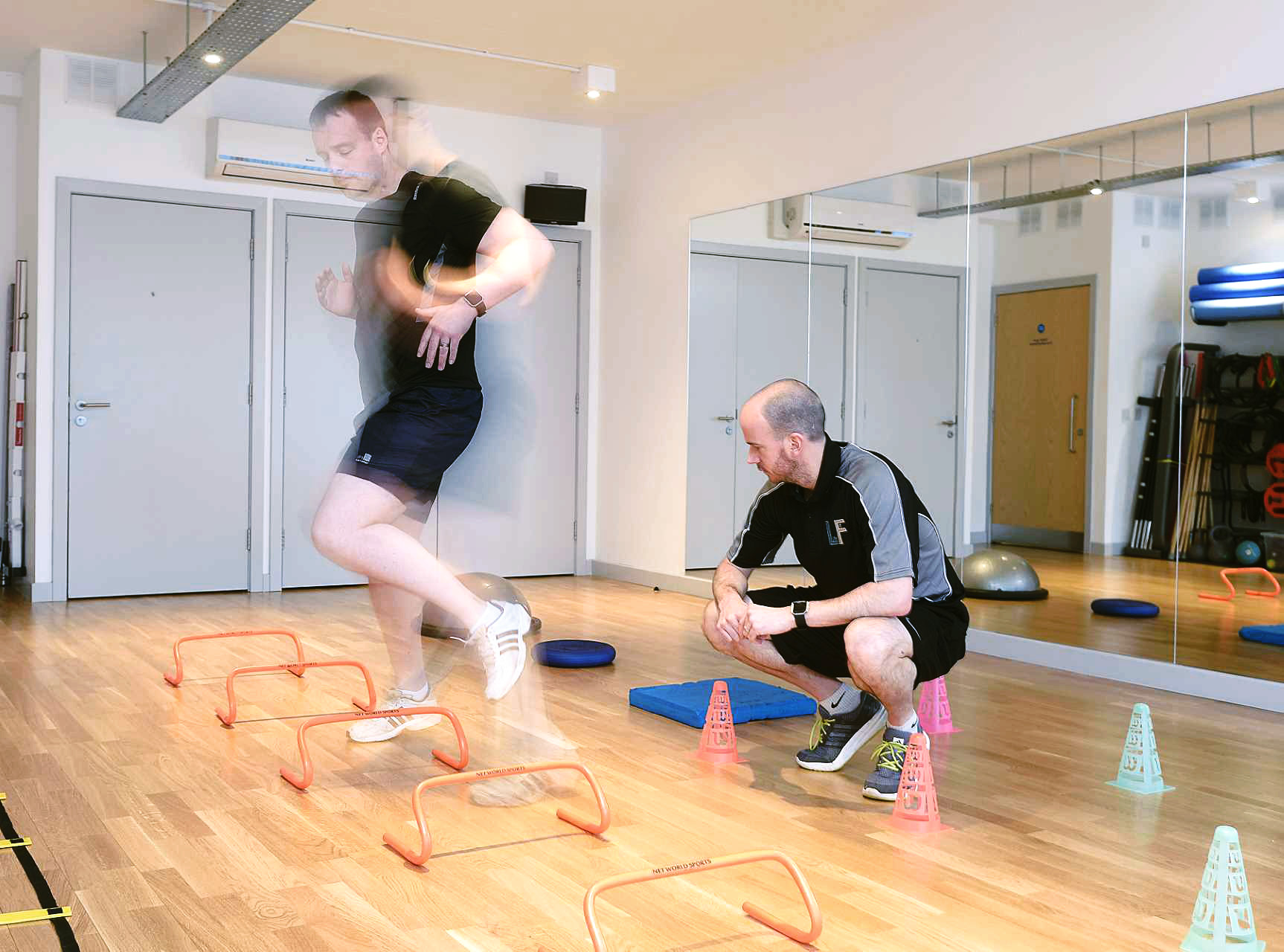Ankle Sprain
Ankle sprains are very common and while many low level sprains resolve within a reasonable time frame, slightly more severe sprains can have longer term implications. The term ‘sprain’ implies an injury to the ankle ligaments. The most commonly injured ligaments are the lateral (outside) ankle ligaments and this is typically done by ‘rolling’ the ankle inwards and under the body into what is termed a ‘planterflexion and inversion’ mechanism. There are three lateral ankle ligaments with the ‘anterior talofibular ligament’ being the most frequently injured, followed by the calcaneofibular ligament and then the posterior talofibular ligament. There are other ligaments around the ankle, particularly the ligament structures between the two shin bones, the tibia and fibula, and also the deltoid ligament situated on the medial (inside) part of the ankle.

Ligament injury has three grades as discussed in relation to the ankle here:
Grade 1 – mild sprain with little disruption of the ligament fibres. This may be a little painful at first and there could be some modest swelling present but it is unlikely to produce significant swelling or bruising. Most people will be able to walk on the ankle immediately after although it is likely to be sore. If you intend to return to relatively low level activity such as flat easy walking then a short period of rest before gradual return to normal activity should be sufficient. If, however you require to return to higher level activity such as football or trail running then perhaps a visit to a physiotherapist for specific rehabilitation advice is recommended.
Grade 2 – this typically involves a little more force through the ankle ligaments and can result in a partial disruption of the ligament fibres although there is not a complete tear. It is more likely that there will be swelling and perhaps bruising will appear a day or so after the injury. People often describe hearing or feeling a ‘pop’ or ‘crack’ at the time of injury which can prompt them to attend A&E for an x-ray as they suspect a bony injury. Many people will make a good recovery of their own accord however some can be left with residual issues. These may include ankle stiffness, a sense of weakness or instability and reduced balance. Stiffness can occur due to the impact this injury has on the mechanics of the ankle. Instability and reduced balance is related to the disruption of the ligament and therefore the specialised nerve receptors situated within the ligament. These receptors normally send information to the nervous system to tell you what the ankle is doing (known as proprioception) but in the presence of an injury this information can be skewed. For sports people or those requiring a higher level of function it is advised to seek physiotherapy assistance relatively soon following the injury (approximately 1-2 weeks). For others they may wish to wait around 4-6 weeks to see how symptoms and function progress and if there is still significant pain, swelling or limitation then physiotherapy is recommended.
Grade 3 – this would normally constitute either a complete tear or a near complete tear of the ligament. People will experience many of the same symptoms as described for a grade 2 injury but it is likely to be more pronounced (i.e. more swelling/bruising). Walking can be very challenging and often not possible without assistance of crutches. These injuries often result in concurrent injury to other aspects of the joint. The cartilage that lines the joint surfaces can be injured in these circumstances, an injury known as an osteochondral lesion. This can provide a greater rehabilitation challenge. For those intending to return to particularly high levels of sport or activity then seeking an orthopaedic opinion from a foot and ankle specialist may be of benefit, where imaging may be recommended. In some circumstances, ligament stabilisation surgery may be advised. Others may try a course of physiotherapy for a period and then follow the advice of the physiotherapist regarding onward referral if progress is limited.

It is very common to see patients attend the clinic with longstanding ankle issues resulting from a historic ankle sprain. In these circumstances typically it has been a high grade sprain/tear or insufficient rehabilitation has been undertaken. As initial pain settles and comfort returns, it may seem like no further action is required. Unfortunately there can be other strength, mobility and balance deficits that remain which can result in future issues. As such a thorough and comprehensive rehabilitation program is advised, especially in those with a grade 2 or 3 injury. Rehabilitation will focus on restoring ankle movement, strength, balance and agility and the program should be progressive and tailored to the individual person reflecting their exercise goals.
If you have an ankle injury and would like assistance, our specialist team of musculoskeletal physiotherapists are here to help.











